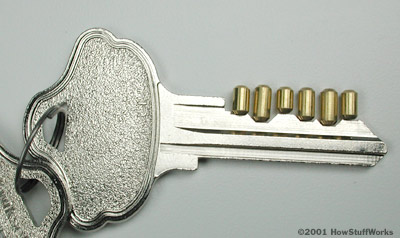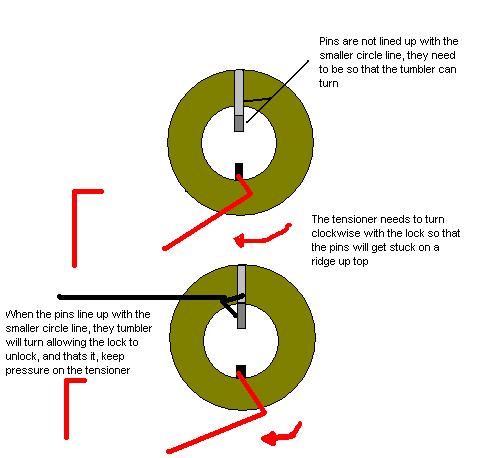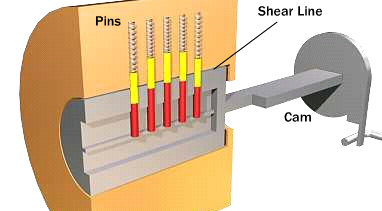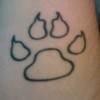LockPicking Basics
See how the pins make a straight line with the right key

How locks work and how to pick them
So lockpicking is an art that is kinda hard to master. I myself am no master so thats why this is titled "basic. First off you need to know how a lock works. A lock consist of pins, springs, a tumbler, housing, and a key. The housing holds the tumbler and thats pretty much it. The tumbler is what holds the pins and is what turns as you lock and unlock a door. The pins are what switch positions when the key is inserted. When they go up and down they move into the right position. When the position is right, they make two parallel lines and don't block eachother from hitting allowing them to move freely. Take a look at the pictures for bettery visual. The pins just need to line up right so that they can move. The key lifts the pins into the right position. That is why keys have different heights so that the different lengths of pins are able to line up correctly. Now that you have an idea of how it works, we move onto lockpicking.
When lock picking you need two things. One being a tensioner and the other is the pick. The tensioner applies pressure to the tumbler and helps keep the pins in the right position when you push them up. A tensioner can be anything that is in the shape of a "L." You can use a paperclip that is bent but they can also bend too much when picking a lock. It's best to find a strong piece of metal that doesn't bend too easy.
The pick is what pushed the pins up to the right position so that the tumbler can turn. A pick needs to be thin so that you can stick it into the lock without getting stuck. A paperclip can work because it is thin enough to fit. You should bend the tip very slightly so that you can push the pins up easy. Just be careful not to break the pick in the lock.
I will only be talking about a single sided lock, which most doors have. They are the ones that only have on grooved side on the key. First you need to stick the small part of the "L" shaped tensioner into the bottom of the lock and turn it slightly so that there is a little bit on tension on the tumbler. By doing this you are able to push pins up and they will get locked into place because they will rest on a very small lip that that the tensioner made. After that you stick your pick in and just start pushing the pins up. It may take a while to get the feel for it, but eventually you will. You need to push the pins up so that they get stuck on the lip. After all of them are on the lip, the tumbler will turn and the lock is unlocked. Best way to practice this is to buy one of those small padlocks from a hardware store and try it on that.
So there is your quick basic lockpicking tutorial. You can buy special lockpicking tools for under 15 bucks. Just remember, in some states it's illegal to have these tools and you could get them taken away if caught. So, just be careful and read your state laws before hand. Be suer to look at the pics on how to pick the locks for better visuals.
A little picture of how to pick a lock

The red pins need to be over the shear line




